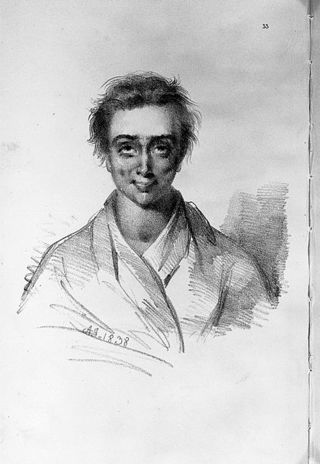Relationships
Erotomania: When Love Is a Delusion
Does erotomania represent a variant of normal mating behavior gone awry?
Posted April 2, 2019 Reviewed by Lybi Ma

"Love is the irresistible desire to be irresistibly desired." —Robert Frost
A patient of mine recently came to Los Angeles, because he’d been communicating through social media with a well-known Hollywood actress who told him that she was in love with him and that they should be together. Except that wasn’t really the case. Not only was the actress not in love with him, she didn’t even know who he was. The “communication” he’d had online consisted of finding hidden expressions of love within her social media posts that were in reality only general comments to fans, not anything romantic or specific to him. When he was confronted with that reality, he couldn't be convinced, and at best sometimes angrily questioned why, if that was true, she'd led him on.
In psychiatry, the delusion that an individual firmly, but mistakenly believes that someone else is in love with them is called “erotomania.” Like my patient, the erotomanic individual often, though not always, believes that it’s a famous person who has fallen for them, despite the fact that they’ve had minimal or no real contact.
Based on the delusion of love and their own reciprocal romantic feelings, those with erotomania sometimes go to great lengths to pursue their love interests, resulting in numerous well-publicized cases of celebrity stalking through the years, some of which—as with the stalkers of Jodie Foster, David Letterman, and the late Latin pop singer Selena Quintanilla-Perez—have ended in violent tragedy.
Erotomania has been documented at least as far back as the ancient Greeks, with Hippocrates and Galen describing the phenomenon several thousand years ago. In 1921, a French psychiatrist published a paper detailing five cases such that erotomania became eponymously known as “De Clerambault’s syndrome” for many years. Today, erotomania is recognized in the Diagnostic and Statistical Manual of Mental Disorders (DSM-5) as an example of delusional disorder, though it’s well known that erotomanic delusions can be found in other psychiatric conditions, like schizophrenia or bipolar disorder, as well.
And yet, despite the syndrome being well-characterized for millennia, it remains unclear why some people develop erotomania. Freud theorized that erotomanic delusions were a psychological defense against unacceptable homosexual feelings, while others have suggested they might be a defense against the disappointment of rejection and unrequited love or the reality of a lonely, non-existent love life.1,2
With meaningful contact between the erotomanic individual and their love interest often lacking, the “evidence” to support the delusional connection is typically found in hidden meanings or gestures, just as it was with my patient. A documented case from a century ago described a woman with an erotomanic fixation for King George V who interpreted the movement of a window curtain as she waited outside Buckingham Palace as a signal that the king was making a public proclamation of his love for her.1 More recently, a case detailed a female student with erotomania who believed that seeing license plates from a particular state or the color purple supplied proof of her classmate’s love.2 Another woman believed that a “natural healer” was in love with her, as evidenced by feeling “healing energy” from him on her legs and throat.3
Modern cases of erotomania have highlighted how hidden messages can be easily inferred through social media. Similar to my patient, a woman who spent several hours a day on Twitter believed that a famous actor was communicating with her through symbols in his tweets.4 Two recent case reports described men who used social media to contact or stalk the objects of their affection, amplifying an imagined connection between them that might not have existed without access to their targets via the internet.5,6
These examples illustrate how when looking for specific evidence to support pre-existing beliefs, online sources of misinformation and misinterpreted information can sometimes fan the flames of conviction to delusional intensity—something I call “confirmation bias on steroids” (see my previous blog post “Psychology, Gullibility, and the Business of Fake News”).

Some cases of erotomania have documented delusions that emerged after a stroke or a brain hemorrhage, in the setting of dementia, and along with neurocognitive deficits suggesting a link to dysfunction in the frontotemporal part of the brain.7-10 Others have described co-occurrence with “misidentification syndromes,” like Capgras syndrome (in which sufferers have a delusion that people have been replaced by imposters) and Fregoli syndrome (in which individuals believe that a single person is taking on the appearance and identity of many others), which are thought to be rooted in problems with facial recognition and are often related to right hemisphere brain injuries.11
The co-occurrence of erotomania with neuropsychological deficits raises the question of whether erotomania itself might be best understood as a kind of cognitive deficit, or even a misidentification syndrome. People with erotomania misidentify expressions of love where they don't exist, reading into the facial expressions, gestures, or online social interactions of others in a way that suggests cognitive impairments related to "theory of mind"—the ability to discern what other people are thinking or feeling.
Of course, trying to read people's minds and decipher whether someone is attracted to you or not is no easy task, even within our normal social and romantic lives. We’re frequently in the dark about whether someone we’re interested in “likes us back,” and we’re often not very good with our predictions. I recall a friend in college advising, “If you think someone’s interested in you, it's probably true.” But in reality, predictive errors in either direction—thinking someone’s interested when they’re not and thinking they’re not when they are—are all too common.
To make things more complicated, romantic feelings are often in flux, changing with time, social interactions, and life events. Sometimes our own attraction develops over time in response to another person’s sustained affection, and vice versa, so much so that it’s a well-tread Hollywood film trope that we all know well. In real life, however, there can be a fine line between the kind of dogged persistence that finally gets the girl or guy at the end of movies and unwanted stalking that can land a pursuer in jail.

Recognizing these parallels between pathological erotomania and normal aspects of our search for love, some have hypothesized that erotomania might represent a variant of evolutionary mating strategy gone awry. Based on a review of 246 published cases of erotomania, one study found that erotomania was more likely to occur in women (70 percent of reported cases), with the “love object” typically being an older man of high social standing.12 Erotomania occurring in men tended to occur earlier in life than for women, with love objects being younger and rated as having high sexual attractiveness. Men were also much more likely than women to report sexual jealousy related to the love object and to engage in harassment and other “forensically relevant” behavior. The study concluded that these findings mirrored similar patterns of normal male-female mating behavior, supporting the idea that erotomania might represent a kind of delusional extreme.
Trinity College Dublin psychiatrist and erotomania expert Brendan Kelly seems to embrace this continuum view within an evolutionary framework and has even posed the question of whether all love might be delusional on some level:
“…Is it possible that erotomania is a symptom of a deeper social problem, rooted in social conditions and power imbalances in societies? If so, is it not also possible and even likely that ‘erotomania’ is not a binary phenomenon (i.e., not just present or absent), but a more graded phenomenon, that can be present to greater or lesser extents, depending on the nature of the political, social, cultural, and personal contexts in which the individual finds himself or herself? And, on this basis is it not eminently possible that there are elements of delusional, erotomanic love mixed with true love in certain romantic relationships more commonly than is imagined, complicating the picture considerably but also resulting in benefit for all?
For example, how many loving, loved, but mildly unsatisfied husbands or wives in quite good relationships convince themselves that (A) their spouse is more amazing that she or he really is; and (B) that this newly amazing spouse loves them more passionately than she or he really does? Perhaps such unconscious, erotomanic, delusional exaggerations of love are, from time to time, necessary and even wise, in order to bolster a reasonably good relationship, and so sustain it over time.
…This, finally, brings us to the vexed issue of whether all romantic love is delusional to a certain extent. Is it possible or even probable that there is a delusional element to our understanding of romantic love and that this element is important in maintaining stable interindividual and social structures?”13
In my very first Psych Unseen blog post, I quoted the protagonist of the movie Girl, Interrupted who says, “Crazy isn’t being broken or swallowing a dark secret. It’s you, or me . . . amplified.” Dr. Kelly seems to suggest that it’s not much of a stretch to suggest that erotomania might indeed be you or me, amplified.
As I was thinking about my patient recently, before I'd looked up Dr. Kelly's paper, I found myself wondering the same thing. At present, psychiatry still lumps a variety of human experiences into single diagnostic categories, like “schizophrenia,” or unitary symptoms, like “delusions” or “hallucinations.” But it’s increasingly recognized that there is significant diversity within such diagnostic labels, and that symptoms can vary along a continuum of severity, among other things. As I often tell my students, I hope that one day psychiatry will not simply throw “paranoia” and “erotomania” into the same black box of “delusions,” but will instead be able to identify them as distinct brain mechanisms representing cognitive processes, like threat and love detection, that aren’t functioning properly.
To be clear, though, it would be a mistake to equate all love with delusion, just as it would be to conflate erotomanic delusions with true, reciprocal love. In a recent blog post, I covered the phenomenon of "positive illusions"—misbeliefs about ourselves (and sometimes our loved ones) that may be favored in evolution. But there’s nothing positive, healthy, or adaptive about erotomania. It may represent an extreme of an evolutionary continuum, but it’s one that typically results in considerable suffering for the person with the delusion, as well as the unfortunate targets of their obsession.
Fortunately for most of us, that's much less true of real love.
Facebook image: SpeedKingz/Shutterstock
References
1. Segal JH. Erotomania revisited: From Kraepelin to DSM-III-R. American Journal of Psychiatry 1989; 146:1261-1266.
2. Jordan H, Lockert E, Johnson-Warren M, et al. Erotomania revisited: Thirty-four years later. Journal of the National Medical Association 2006; 98:787-793.
3. Kelly BD, Kennedy N, Shanley D. Delusion and desire: Erotomania revisited. Acta Psychiatrica Scandinavia 2000; 102:74-76.
4. Kalbitzer J, Mell T, Bermpohl F, et al. Twitter psychosis: A rare variant of a distinct syndrome. The Journal of Nervous and Mental Disease 2014; 202:623.
5. Krishna N, Fischer BA, Miller M, et al. The role of social media networks in psychotic disorders: a case report. General Hospital Psychiatry 2013; 35:576.e1-576.e2
6. Faden, Levin J, Mistry R, et al. Delusional disorder, erotomanic type, exacerbated by social media use. Case Reports in Psychiatry 2017; 8652524.
7. Anderson CA, Camp J, Filley CM. Erotamania after aneurysmal subarachnoid hemorrhage: Case report and literature review. Journal of Neuropsychiatry and Clinical Neurosciences 1998; 10:330-337.
8. Das A, Mathur S, Orrell M. Erotomania secondary to cerebrovascular accident in frontotemporal impairment. Irish Journal of Psychological Medicine 2005; 22:113-114.
9. Olujugba C, de Silva R, Kartsounis LD, et al. De Clerambault’s syndrome (erotomania) as a presenting feature of fronto-temporal dementia and motor neurone disease (FTD-MND). Behavioral Neurology 2007; 18:193-195.
10. Fujii DEM, Ahmed I, Takeshita J. Neuropsychological implications in erotomania: Two case studies. Neuropsychiatry, Neuropsychology, and Behavioral Neurology 1999; 12:110-116.
11. Granstein J, Strimbu K, Francois D, et al. An unusual case of erotomania and delusional misidentification syndrome. Journal of Psychiatric Practice 2015; 21:306-312.
12. Brüne M. De Clerambault’s syndrome (erotomania) in an evolutionary perspective. Evolution and Human Behavior 2001; 22:409-415.
13. Kelly B. Love as delusion, delusions of love: Erotomania, narcissism, and shame. Medical Humanities 2018; 44:15-19.




